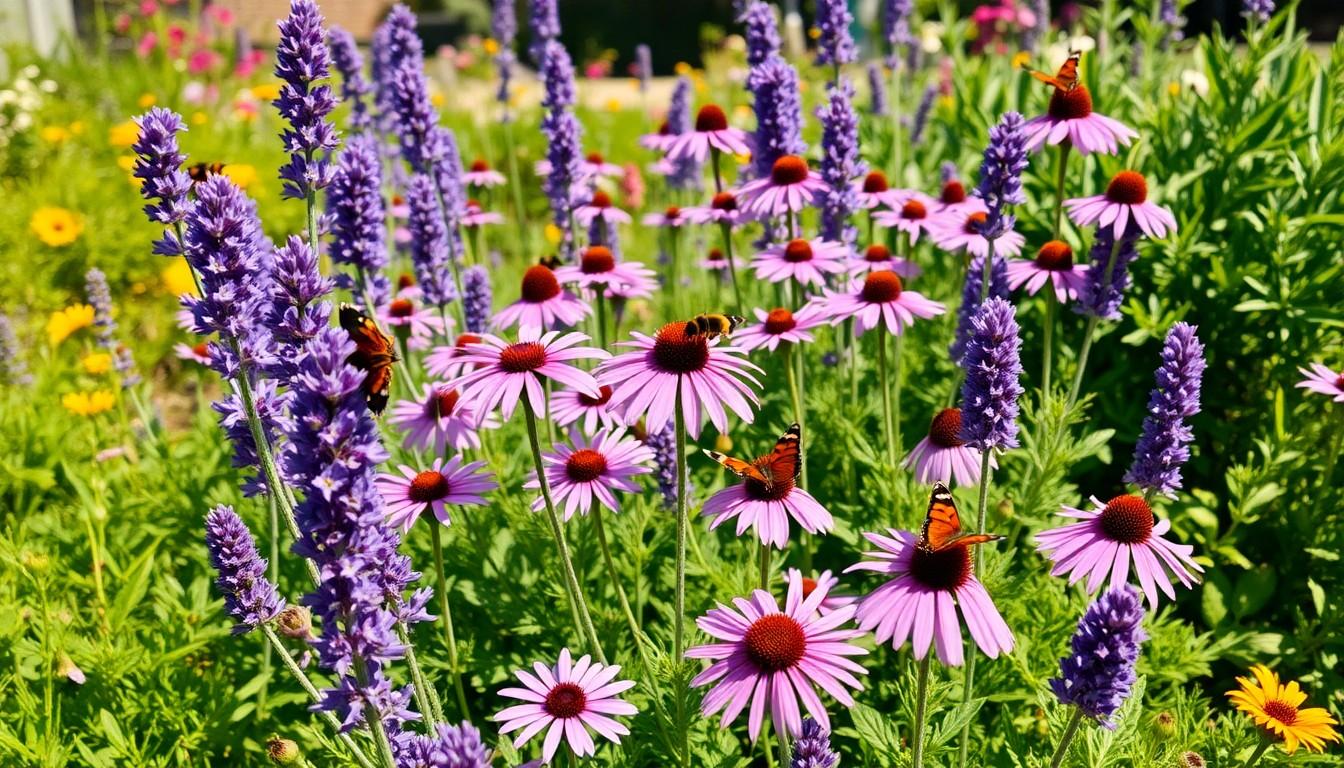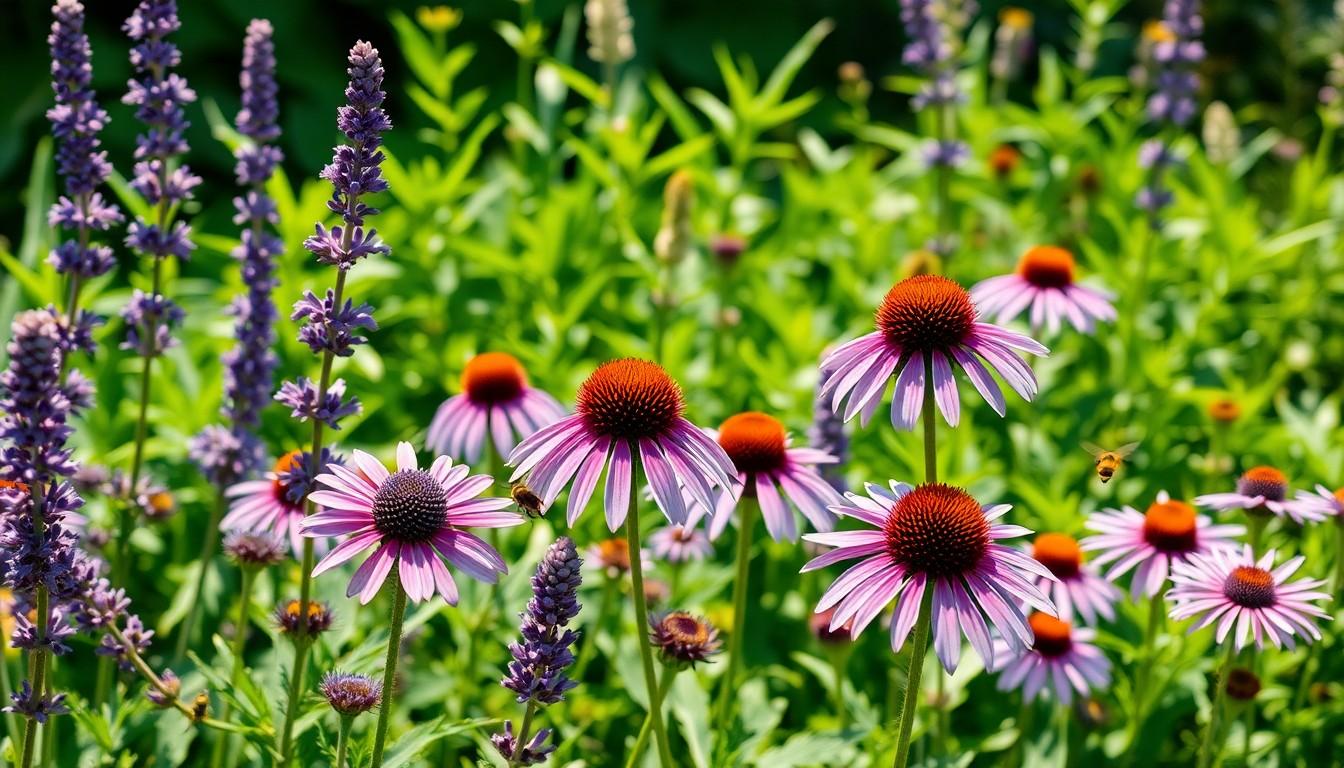Imagine stepping into a garden bursting with vibrant shades of purple, where every bloom feels like a royal invitation. Purple outdoor plants don’t just add color; they transform spaces into whimsical retreats that can even make your neighbor’s hydrangeas a bit envious. Whether it’s the rich hue of lavender or the bold pop of purple coneflowers, these plants bring a unique flair that’s hard to resist.
Overview of Purple Outdoor Plants
Purple outdoor plants play a significant role in enhancing garden aesthetics. Variety exists among these plants, catering to different preferences and growing conditions. For instance, lavender thrives in sunny spots, while purple coneflowers adapt well to various soil types.
Many gardeners appreciate the soothing fragrance and calming hues of plants like agastache. This plant attracts pollinators, benefiting local ecosystems. Additionally, plants such as salvia and ornamental grasses feature stunning purple varieties, providing texture and depth to landscapes.
Maintenance requirements vary among purple plants. Some, like violet, prefer partial shade and consistent moisture. Others, including purple petunias, flourish in full sunlight and tolerate drought conditions. Selecting plants based on these needs promotes healthy growth and vibrant displays.
Purple leaves and flowers create contrast with green foliage. This contrast elevates the visual impact of garden beds. Furthermore, combining purple plants with complementary colors results in captivating designs. For example, pairing purple asters with yellow marigolds creates a stunning visual effect.
Diverse purple plants also provide seasonal interest. Spring-blooming options, like alliums, appear early in the gardening season. Summer brings the blooms of various purple daylilies, while fall showcases asters that continue to attract attention.
The allure of purple outdoor plants captures the essence of a beautiful garden. Their ability to create enchanting environments makes them popular choices for gardeners looking to add unique touches to their landscapes.
Benefits of Purple Outdoor Plants

Purple outdoor plants provide numerous benefits for gardens, enhancing beauty and attracting wildlife. Their vibrant hues create captivating landscapes that draw the eye.
Aesthetic Appeal
Visual interest relies heavily on color, and purple plants stand out among green foliage. Lavender’s soft purple flowers create calming spaces, while purple coneflowers add boldness. Various shades of purple cater to unique garden designs, ranging from deep violet to soft lavender. Combining these hues with other colors forms striking contrasts, making gardens visually appealing throughout multiple seasons. Ornamental grasses with purple tints provide texture, enriching the overall look. The presence of purple plants consistently enhances the charm of outdoor spaces, encouraging individuals to linger and appreciate the beauty.
Attracting Pollinators
Purple outdoor plants play a crucial role in attracting pollinators, which support local ecosystems. Flowers like agastache and bee balm serve as magnets for bees and butterflies. These pollinators find nourishment in the nectar of vibrant purple blooms. Diverse purple varieties bloom throughout the growing season, providing a continuous source of food. Constant visits from pollinators improve garden health, promoting fruit and seed production. By incorporating purple plants, garden enthusiasts contribute positively to the environment and help maintain a balanced ecosystem.
Popular Purple Outdoor Plants
Purple outdoor plants add extraordinary beauty to any garden. Several varieties stand out for their stunning hues and resilience.
Lavender
Lavender thrives in sunny spots and well-drained soil. This fragrant plant attracts pollinators, enhancing biodiversity in gardens. Its purple flower spikes bloom from late spring to summer, providing a vibrant display. With its soothing aroma, lavender is often used in aromatherapy. Several cultivars exist, like ‘Munstead’ and ‘Hidcote,’ each offering unique characteristics. Additionally, lavender requires little maintenance, making it perfect for busy gardeners.
Purple Coneflower
Purple coneflowers are known for their daisy-like appearance and hardiness. This perennial plant adapts to various soil types and prefers full sun. Blooming from mid-summer to early fall, it showcases vibrant purple petals surrounding a spiky central cone. Coneflowers attract bees and butterflies, providing critical support to local ecosystems. Planting them in groups creates striking visual impact in any garden setting. Several cultivars are available, including ‘Magnus’ and ‘PowWow Wild Berry,’ offering diverse options for gardeners.
Japanese Maple
Japanese maple cultivars exhibit stunning purple foliage that captivates garden enthusiasts. These trees prefer partial shade and well-drained soil, thriving in various landscapes. Their delicate leaves change color throughout the seasons, providing year-round visual interest. Small ornamental flowers appear in spring, adding further charm. Compact varieties like ‘Crimson Queen’ are ideal for smaller gardens, while larger types such as ‘Bloodgood’ make a bold statement. Japanese maple enhances the elegance of any outdoor space with its graceful form and rich color.
Care and Maintenance Tips
Maintaining purple outdoor plants requires specific attention to their individual needs. Consider the following aspects to ensure healthy growth.
Sunlight Requirements
Different purple plants thrive in varying light conditions. Lavender prefers full sun, flourishing best in six to eight hours of direct sunlight daily. Purple coneflowers adapt well to both full sun and partial shade, showcasing resilience in diverse settings. Meanwhile, shade-loving varieties, like certain types of salvia, still contribute vibrant colors even in lower light. Assessing the sunlight availability in the garden helps in selecting the right plants for the desired location. Regular checks for leaf wilting or discoloration offer insight into whether plants receive adequate light.
Watering Needs
Watering needs vary among purple outdoor plants. Newly planted lavender requires regular moisture until established, while mature plants tolerate dry spells. Purple coneflowers prefer soil that drains well but benefit from consistent watering during hot summer months. Checking soil moisture levels ensures optimal hydration without over-watering. A simple finger test can help gauge moisture depth; if the top inch feels dry, it’s time to water. Additionally, mulching around these plants conserves moisture and regulates soil temperature, promoting healthier growth overall.
Conclusion
Purple outdoor plants offer a stunning way to elevate any garden. Their vibrant hues not only enhance visual appeal but also attract beneficial wildlife, contributing to a thriving ecosystem. With a variety of options available, gardeners can find the perfect purple plants to suit their unique preferences and growing conditions.
Understanding the specific needs of each plant ensures they thrive and provide lasting beauty throughout the seasons. By incorporating these enchanting plants into landscapes, one can create captivating designs that draw the eye and inspire admiration. Embracing the charm of purple outdoor plants can transform any outdoor space into a vibrant sanctuary.

